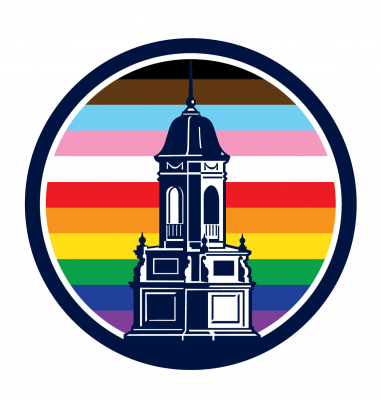Today’s post is brought to us by Edward Guimont, a PhD candidate in the History Department.
On October 25-28, 2018, the annual meeting of the North American Conference on British Studies (NACBS) was held in Providence, Rhode Island. NACBS is the umbrella organization of historians of Britain resident in Canada and the United States, and consists of six regional affiliate groups. The annual meeting is hosted by a different regional affiliate every year, on a rotating basis. In 2018, the affiliate hosting was the North East Conference on British Studies (NECBS), whose current president is UCHI faculty member Brendan Kane. Due to its location, a number of UConn History Department doctoral candidates attended NACBS, participating in a variety of panels.
Brendan chaired and commented on the panel “Everything Old is New Again: Refugees, Climate Change, and Rebuilding in Early Modern Britain and Ireland,” while History Department associate professor Janet Watson commented on the panel “Historicising Selfhood.” Hilary Bogert-Winkler, History Department doctoral  candidate, presented her paper, “What’s in a Name? Identifying Members of the Church of England, 1640-1662,” as part of the workshop panel “Populations: Counting, Classifying, Moving, and Managing Groups of People.” I presented my paper “Colonialism from the Cretaceous: Living Fossils as Imperial Justification” as part of the panel “Journey to the Liminal State: Travel Abroad and the Interpretation of Mythic History,” a panel which I also organized.
candidate, presented her paper, “What’s in a Name? Identifying Members of the Church of England, 1640-1662,” as part of the workshop panel “Populations: Counting, Classifying, Moving, and Managing Groups of People.” I presented my paper “Colonialism from the Cretaceous: Living Fossils as Imperial Justification” as part of the panel “Journey to the Liminal State: Travel Abroad and the Interpretation of Mythic History,” a panel which I also organized.
This was the first conference in which I organized a panel of my own. In the past, applying to conference as an individual had resulted in me sometimes being placed into panels which could be described as thematically dissonant. Creating my own panel, however, allowed me to choose historians whose work not only fit my own, but who I already admired and whose work I knew would complement my own research. As such, their comments would be particularly useful when revising the chapter from my dissertation that I drew my paper from.
In addition, Brendan, Hilary, fellow History Department candidates Robert Howe and Kristen Vitale, and myself all worked on the local arrangements committee. This gave me newfound appreciation for the amount of labor which goes into a conference such as this to enable the presentations to take place without a hitch. This included, but was far from limited to, manning the registration table to handling last-minute registrations, finding room numbers, printing additional programs, and handling tech support. I would encourage all who participate in conferences to work the tables (metaphorically as well as literally) at least once in order to gain a full appreciation of the labor involved in conferences by the support staff. I feel this is as important to becoming a rounded academic as organizing a panel.
On the topic of panels, NACBS offered an extremely diverse range of subjects. My area of expertise is modern Britain, with a focus on the British Empire in approximately the first half of the twentieth century. I found plenty of presenters who shared my general area of focus, but many more who went beyond it – from a queer interpretation of James Bond, to a nineteenth century search for Alexander the Great’s relics in Central Asia, to paranoid pre-World War I fantasies of German invasion of Britain. Even though these panels were completely outside of my area of focus, each one I attended – in addition to being of great interest – gave me ideas, big and small, to incorporate into my own work, whether my dissertation or plans for future research. This is the greatest benefit of a major conference like NACBS – by being exposed to work from your field, outside of your individual focus, you can gain insights into conceptual arenas you did not even know you were ignorant of beforehand.
It is precisely this aspect that exposes the fallacy of comparing conferences and higher education in general to a marketplace of ideas. It is the exact opposite: information is freely exchanged in an environment where all participants, from tenured professors to first-semester students, are on an equal setting, and all benefit as a result.










